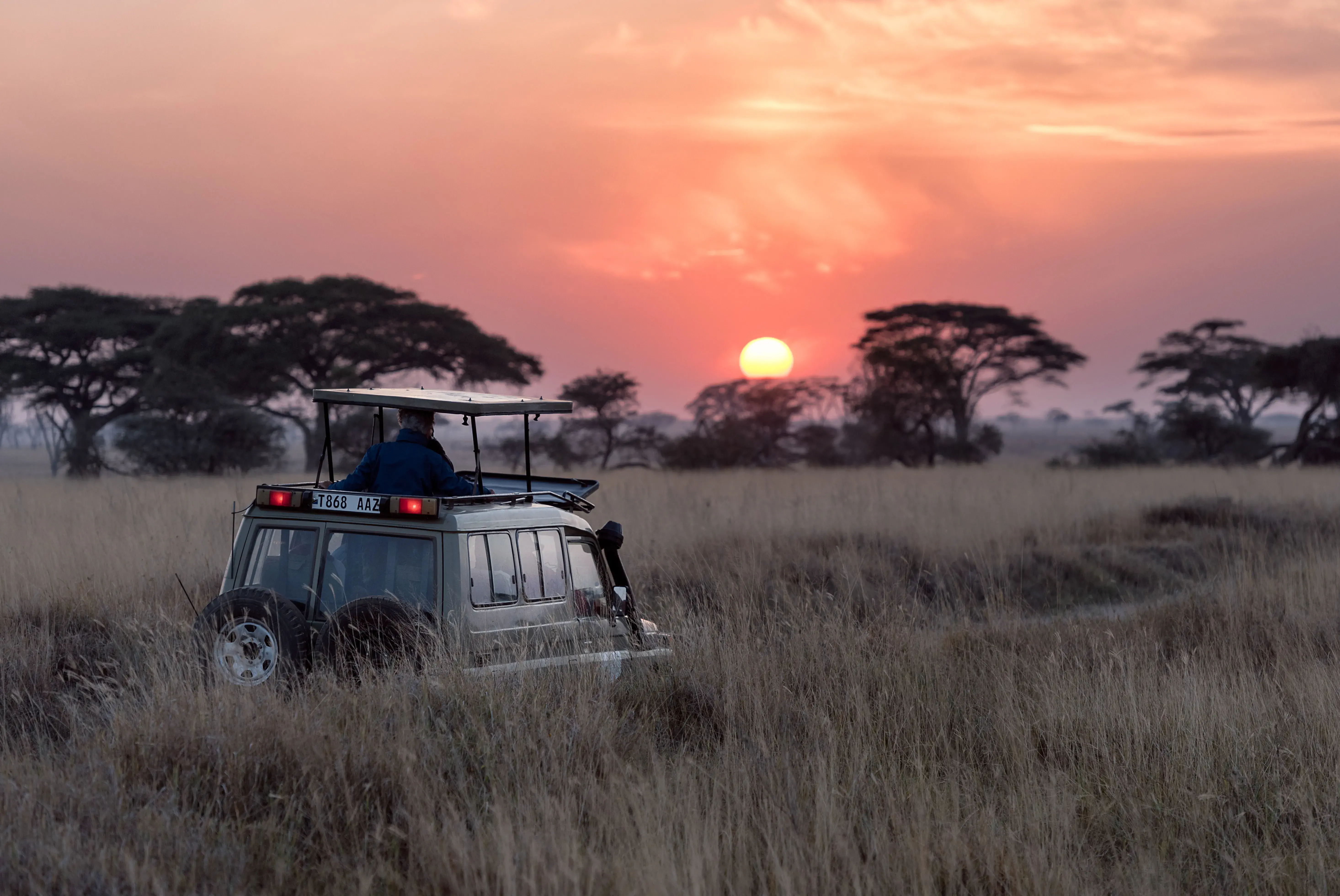
Ruaha National Park, located in the heart of Tanzania, is a vast and untamed wilderness that offers an authentic African safari experience. Spanning approximately 20,226 square kilometers (7,809 square miles), it is the largest national park in Tanzania and one of the largest in East Africa. Established in 1964, Ruaha is named after the Great Ruaha River, which flows along its southeastern border and is a lifeline for the park’s diverse ecosystems and wildlife.
Ruaha National Park is characterized by its dramatic landscapes, which include rolling hills, open plains, dense woodlands, and rugged mountains. The park's varied terrain creates a mosaic of habitats that support a wide range of flora and fauna. The Great Ruaha River and its numerous tributaries are vital to the park's ecosystem, providing water for wildlife and sustaining lush vegetation along the riverbanks. The scenic beauty of Ruaha, with its baobab-studded plains and granite kopjes, offers a breathtaking backdrop for wildlife viewing.
Ruaha National Park is renowned for its rich wildlife diversity and large populations of big game. The park is home to one of the largest elephant populations in East Africa, with herds often seen near the river and waterholes. It also boasts significant numbers of buffalo, giraffe, zebra, and various antelope species, including greater and lesser kudu, sable, and roan antelope. Ruaha is a predator's paradise, with healthy populations of lions, leopards, cheetahs, and spotted hyenas. The park is also one of the few places in Tanzania where visitors can see endangered African wild dogs.
With over 570 recorded bird species, Ruaha National Park is a haven for birdwatchers. The park's diverse habitats attract a wide variety of birds, including both resident and migratory species. Notable birds include the fish eagle, lilac-breasted roller, bateleur eagle, and the strikingly beautiful Narina trogon. The Great Ruaha River and its associated wetlands provide excellent birdwatching opportunities, with waterbirds such as herons, storks, and kingfishers commonly seen. The park's avian diversity adds another layer of interest to the safari experience.
The Great Ruaha River is the heart and soul of Ruaha National Park. This vital watercourse supports a wide range of wildlife and vegetation, creating a lush, green corridor through the otherwise dry landscape. During the dry season, the river becomes a crucial water source for animals, drawing large concentrations of wildlife to its banks. The river also supports populations of hippos and crocodiles, which can often be seen basking on the sandbanks or submerged in the water. Game drives along the river provide some of the best wildlife viewing opportunities in the park.
Ruaha National Park is home to a diverse array of plant species, many of which are adapted to the arid conditions of the region. The park is particularly famous for its impressive baobab trees, which dot the landscape and provide essential resources for wildlife. These ancient trees store water in their trunks, produce nutritious fruit, and offer shelter for a variety of animals. Other notable plant species include acacias, commiphora trees, and various types of grasses and shrubs that sustain the park's herbivores.
The area surrounding Ruaha National Park is inhabited by the Hehe and Barabaig tribes, each with a rich cultural heritage. Visitors have the opportunity to engage with these communities and learn about their traditional ways of life. Cultural tours often include visits to local villages, where guests can experience traditional dances, crafts, and agricultural practices. These interactions provide a deeper understanding of the local culture and the symbiotic relationship between the communities and their natural environment.
Ruaha National Park can be visited year-round, but the best time for wildlife viewing is during the dry season, from June to October. During this period, animals are more concentrated around the remaining water sources, making them easier to spot. The wet season, from November to May, brings lush green landscapes and is the best time for birdwatching as migratory birds arrive. The park is less crowded during the wet season, offering a more peaceful experience. Each season in Ruaha has its own unique charm and attractions.
Exploring Ruaha National Park can be done through various safari options. Guided game drives are the most popular, offering the chance to see a wide range of wildlife from the comfort of a 4x4 vehicle. Walking safaris provide a more intimate experience, allowing visitors to explore the park on foot and learn about the smaller details of the ecosystem. Night safaris offer a different perspective, with the opportunity to see nocturnal animals in action. Accommodations range from luxury lodges and tented camps to budget-friendly options, ensuring a memorable stay for every traveler.
Conservation is a core focus of Ruaha National Park. Efforts are in place to protect its diverse ecosystems and wildlife populations. Anti-poaching measures, habitat restoration projects, and community involvement programs are critical components of the park's conservation strategy. By engaging local communities in conservation activities and promoting sustainable tourism, the park aims to ensure that its natural and cultural heritage is preserved for future generations. Visitors to Ruaha contribute to these efforts, supporting the ongoing protection and preservation of this unique wilderness.
Ruaha National Park is accessible by road and air. The park is located about 625 kilometers (388 miles) from Dar es Salaam, and the drive takes approximately 10 hours, passing through scenic landscapes and local villages. There are also charter flights available to the park’s airstrip, providing a quicker and more convenient option. Whether you are embarking on a short safari or a longer exploration of southern Tanzania, Ruaha National Park offers an accessible and rewarding experience in one of Africa’s most beautiful and diverse landscapes.
Ready to embark on your dream adventure? Click the button below to start planning your trip with us!